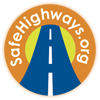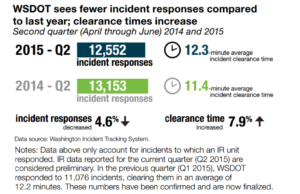Safety Service Patrols Continue to Share Best Practices
Over the past year, the Federal Highway Administration (FHWA) and SafeHighways.org have advanced their collaborative effort to host quarterly Idea-Sharing Network Sessions for Safety Service Patrol (SSP) managers and FHWA Division Administrators. The result of which has been a broad dissemination of best practices for SSP operations nationwide. From in-cab cameras that capture incident scenes in real-time to utilization of state highway patrol tracks for training SSP operators in safe environments, each session offers unique insights from SSP managers, supervisors and industry experts that can be applied to Traffic Incident Management (TIM) programs across the country.
Sessions focus on distinct topics related to SSPs and invite guest speakers to make presentations specific to their patrol program or area of expertise. The first half of the session is dedicated to these presentations and the latter half encourages open discussion during the question and answer period. Prior to the close of each session, the audience is polled on their preference for topics for future sessions. To date, based on these polls, topics explored have included: Performance Measures, Training, and Vehicles and Equipment.
Session II: Performance Measures
Hosted on October 23rd, the second SSP Idea-Sharing Network Session featured presentations from:
- Shawn Kinney, Florida Department of Transportation (FDOT) TIM and Road Ranger Program Manager;
- Scott Yinger, Maryland State Highway Administration (MDSHA) Chief of Field Operations Division;
- Vince Fairhurst, Washington State DOT (WSDOT) State Incident Response Program Manager; and
- Paul Jodoin, FHWA TIM Program Manager, Traffic Incidents and Events Management Team
In the first presentation of the session, Kinney focused on two tools utilized by FDOT: SunGuide and Florida 511. Road Rangers input incident data into SunGuide, such as the type of incident, the time period of the incident, and the activity. The Florida 511 mobile app and web interface then uses this data to notify motorists of traffic delays. FDOT also uses the data from SunGuide, as well as comment cards submitted by motorists who receive assistance from the Road Rangers, to produce district and executive-level reports that demonstrate the effectiveness of the Road Ranger program. In addition to current practices, Kinney relayed FDOT’s desire to develop allocation models for identifying areas with coverage needs that could be supported by quantifiable data. At the time of the presentation, FDOT had begun working with two local universities to develop the model.
For MDSHA, Yinger relayed how data collection had effectively justified an expansion of its Emergency Patrol to include overnight and weekend coverage. He also identified how Emergency Patrol performance data correlates directly with program funding (see chart). MDSHA works with an academic partner to analyze the data collected and to determine a benefit to cost ratio of the Maryland’s Coordinated Highways Action Response Team (CHART). The program’s current benefit to cost ratio is 32:1.
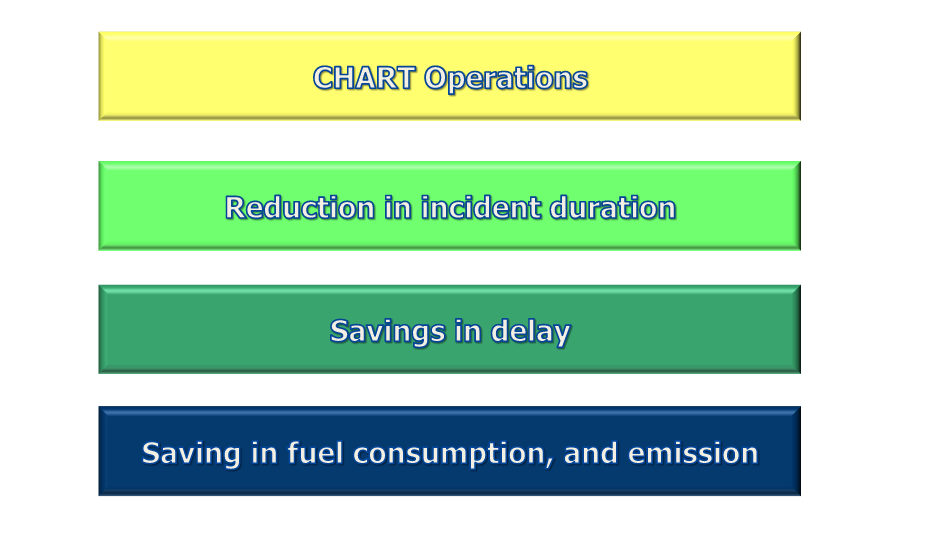
MDSHA uses performance measures to justify funding for the Emergency Patrol program as demonstrated by the chart above.
In his discussion of performance measures, Fairhurst emphasized the importance of its Incident Response Team’s (IRT) close working relationship with Washington State Police and of legislation, such as the Move Over and Quick Clearance laws, to keep IRT safe and responsive. WSDOT looks closely at average clearance times and secondary incidents as key congestion measures that communicate performance. Fairhurst stated that recent measurements had found a 4.6% decline in incident responses from the same time period in 2014, but a 7.9% increase in incident clearance time.
To conclude the session’s presentations, Jodoin highlighted the recent release of a Benefit Cost tool for Safety Service Patrols. The web-based tool allows Safety Service Patrols to input data about their program and coverage areas to then evaluate and compare the monetary value of SSP programs. (Learn more about this tool by clicking here.)
Session III: Training
In February, the network again convened to discuss best practices for training SSP operators, featuring presentations from:
- James (“Jim”) Austrich, FHWA SHRP2 TIM Training Program Manager;
- Steve Austin, Project Manager, Cumberland Valley Volunteer Firemen’s Association and Emergency Responder Safety Institute; and
- Anthony (“Cliff”) Braam, North Carolina DOT (NCDOT) Traffic Operations Engineer Traffic Systems Operation Unit
As the SHRP2 TIM Training Program Manager, Austrich emphasized the role of SSPs in detecting incidents and the ability of SHRP2 training to lay the foundation for SSP tactics at incident scenes. He identified best practices utilized in Maryland, Georgia and California to ensure availability of TIM training to core personnel. SHRP2 TIM Training is available in-person or on a web-based platform. For more information, click here.
Austin identified additional web-based training tools available to SSP operators. The Emergency Responder Safety Institute’s Learning Network provides a variety of modules and topics to aid in the training process. It’s free to use and many of the modules are created in collaboration with FHWA and industry experts. According to ResponderSafety.com, the resources made available on the Learning Network “proceed from the basis provided by the National Unified Goal for Traffic Incident Management, which promotes coordinated and consistent response protocols across all agencies with jurisdiction of traffic incidents.” Learn more here.
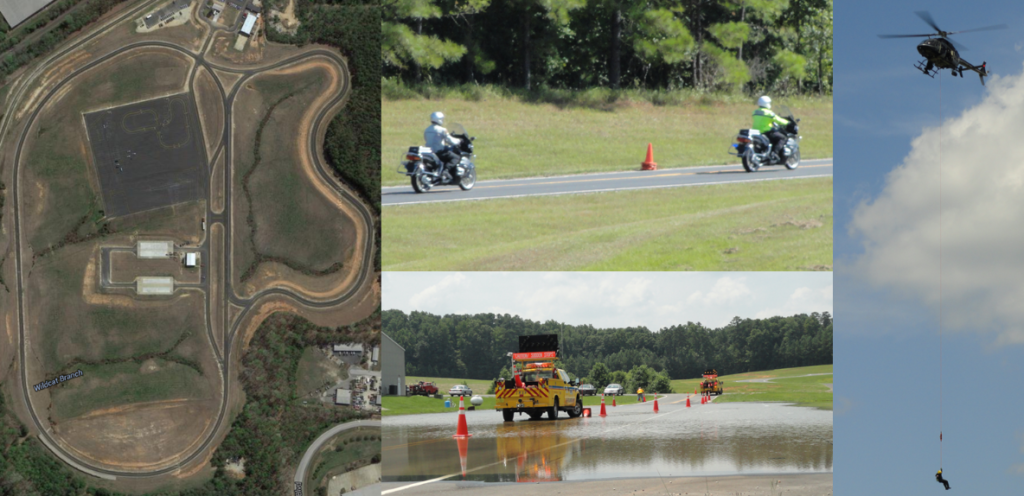
NCDOT partners with NC DPS to use private training courses/tracks for training of Safety Patrol personnel.
North Carolina DOT’s Braam provided a state perspective on training for SSPs, emphasizing the patrol’s focus on incident management and traffic control. Braam walked attendees through the process of creating a training program for the state’s Safety Patrol as well as best practices learned along the way. One best practice in particular that caught the attention of several session attendees was NCDOT’s use of the state highway patrol’s training tracks. Braam explained that the DOT and NC Department of Public Safety had reached an agreement to share access to the training tracks, which allows for a focused, uninterrupted training environment for Safety Patrol operators.
Session IV: SSP Equipment and Vehicles
For its fourth session, held in June of this year, FHWA and SafeHighways.org modified the session format to invite more presenters to speak on the topic of SSP Equipment and Vehicles. Each presenter was asked to focus on a single technology or best practice during a ten-minute presentation. The session featured information from:
- Andre Todd, Assistant Manager of Operations, HERO Unit Incident Management, Georgia Department of Transportation (GDOT);
- Sal Cowan, Director of Traffic Operations, New Jersey Department of Transportation (NJDOT);
- Scott Yinger, Chief, Field Operations Division, MDSHA, Office of CHART & ITS Development;
- Dominic DelCol, Transportation Manager 1, Statewide TMC Supervisor (2nd Shift), Ohio Department of Transportation (ODOT);
- John McClellan, Freeway Operations Supervisor, Minnesota Department of Transportation (MNDOT);
- Michael Washburn, Incident Management Program Manager, Florida’s Turnpike Enterprise, Florida Department of Transportation (FDOT); and
- William Hayes, Branch Manager, SAFE Patrol, Kentucky Transportation Cabinet
Both Todd (GDOT) and Cowan (NJDOT) focused on a new trend toward installing roll-up doors on SSP vehicles. Todd used videos to demonstrate how the roll-up doors function on GDOT HERO’s new, large response vehicles and can provide for safer operation when accessing equipment. He noted that the doors’ tracks need to be cleaned regularly to ensure the least amount of resistance when opening and closing the doors. Todd also emphasized the importance of securing the equipment behind the doors.
NJDOT had not yet implemented the roll-up doors, but Cowan provided blueprints for the new vehicles that would include this feature and background on the DOT’s decision to proceed with roll-up doors. Unique from GDOT’s model, Cowan explained that the roll-up doors would open to a sliding rack that would be accessible on either side of the vehicle. NJDOT has since finalized the design of their new vehicles.
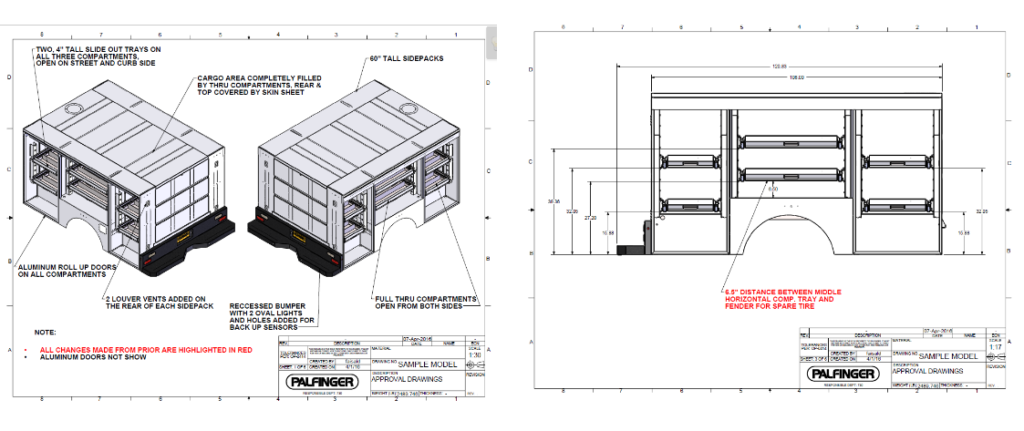
NJDOT was in the process of building a customized vehicle for its SSP, complete with roll-up doors as diagrammed above.
Yinger and DelCol shared their experiences with camera systems installed on SSP vehicles. MDSHA and ODOT identified how video footage can be used to provide real-time, close-in visuals of an incident scene’s status, which can be advantageous when responding to an incident scene and communicating to the TMC. ODOT also uses video footage for training purposes and to help with any necessary conflict resolution. MDSHA, however, does not keep recordings of the videos due to the cost to store the footage, and the potential for audits and legal review.
McClellan provided an inspiring story about a FIRST driver who saved a motorist’s life using an AED. He recognized that while the applications are rare (three total in ten years), AED devices can be lifesaving for motorists and for fellow first responders. Washburn added to the equipment discussion with a review of the procurement, and proper storage and usage of oil spill kits and cold patches to fix roadway gouges and potholes. Lastly, Hayes closed the presentations with an overview of a universal spare tire lowering kit to assist motorists who drive SUVs, vans, and other vehicles that have a spare tire mounted to the undercarriage.
FHWA and SafeHighways.org will be hosting the next SSP Idea Sharing Network Session on September 15th. The topic will focus on TMC Dispatch and SSP Communications.
To add someone to the invitation list or for more information on upcoming webinars, please contact ssp@safehighways.org.
To view presentations from previous sessions, please click here.
